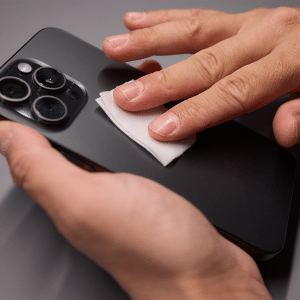Apple is seemingly taking strides in semiconductor innovation by working on chip designs that will leverage the Taiwan Semiconductor Manufacturing Company’s (TSMC) forthcoming 2-nanometer (nm) fabrication process.
This development was hinted at through a presentation slide from an Apple employee, which surfaced online via social media and was initially reported by a Korean outlet. The slide, though largely concealed, disclosed Apple’s engagement with TSMC’s evolving nanometer technologies, including the 5nm, 3nm, and under-development 2nm processes. The terminology “TS2nm” is particularly noteworthy as it suggests Apple’s involvement in the cutting-edge 2nm chip technology, which aims to significantly enhance processor performance and efficiency.
The move to smaller nanometer processes is a critical aspect of semiconductor development, allowing for denser, faster, and more power-efficient chips. For context, a human hair’s width is tens of thousands of times larger than the 2nm scale.
TSMC, a leading global semiconductor foundry and Apple’s key supplier, is not only focusing on the 2nm technology but is also laying the groundwork for future 1.4nm and possibly 1nm chips, with production anticipated as early as 2027.
Apple’s transition to 3nm technology in the previous year marked a significant leap, enhancing iPhone and Mac performance with faster processing speeds and greater energy efficiency. These improvements underscore the tangible benefits of moving to more advanced chip technologies.
The anticipated 2nm chips, referred to as “N2” within the industry, are expected to further these advancements, offering substantial speed improvements and power savings.
To support the production of these advanced chips, TSMC is investing heavily in new manufacturing facilities, with plans for further expansion.
Apple, as TSMC’s primary client, often secures early access to the latest chip technologies, having exclusively utilized TSMC’s 3nm chips for its range of products in 2023.
The partnership between Apple and TSMC continues to drive forward the boundaries of chip technology, promising even more powerful and efficient devices in the future.








